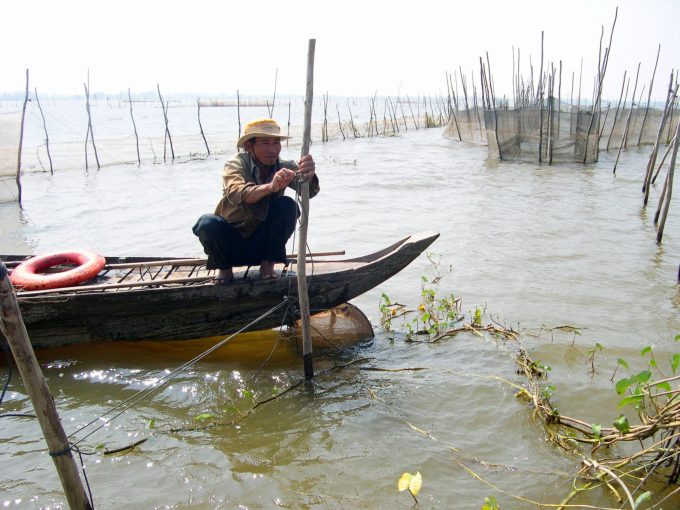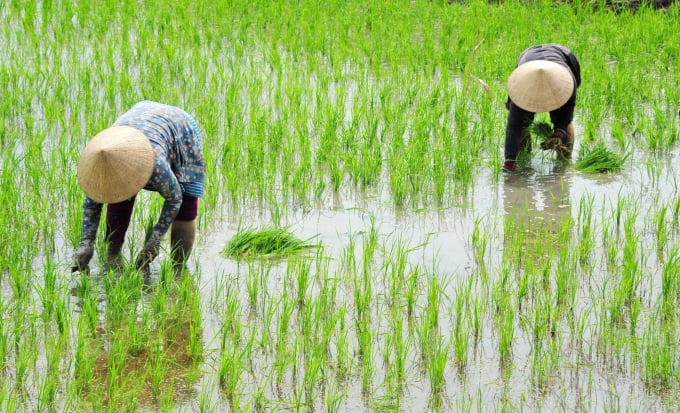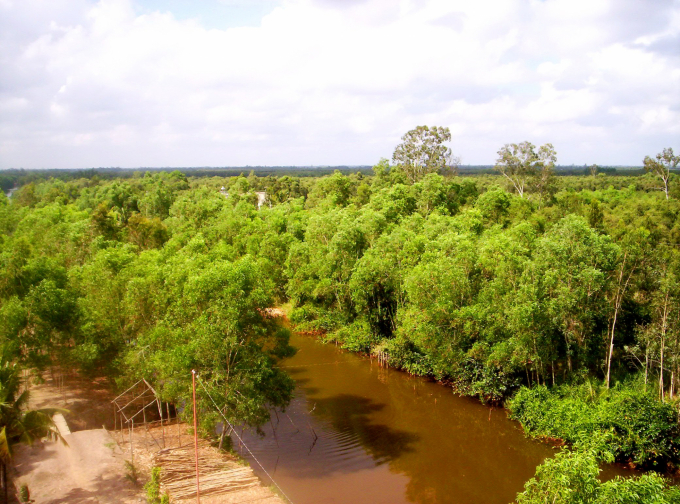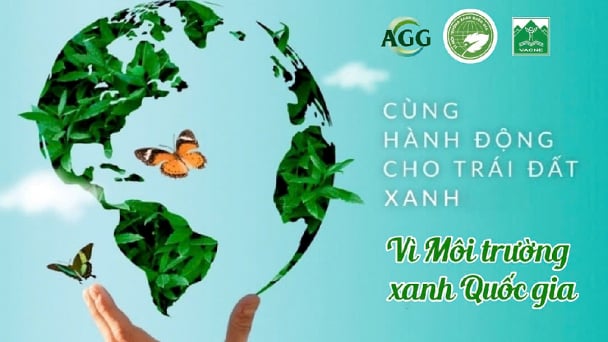May 18, 2025 | 07:05 GMT +7
May 18, 2025 | 07:05 GMT +7
Hotline: 0913.378.918
May 18, 2025 | 07:05 GMT +7
Hotline: 0913.378.918

In the Long Xuyen Quadrangle, low-lying alkaline soil requires residents to find new ways to earn a living, including using natural water resources during the floating season. Photo: Le Hoang Vu.
Other than the hilly regions of An Giang and Kien Giang, as well as the ancient alluvial slopes along the Vietnam-Cambodia border, the Mekong Delta was formed by the deposition of fresh sedimentary materials about 6,000 years ago.
The process of aggregating sedimentary materials, in which the role of water source and two-season climate are related to physicochemical properties, the formation and distribution of soil groups, has seen the interaction of all components for microorganisms, plants, and animals to form ecosystems that are suitable for their environment, resulting in an abundance of biodiversity in the delta.
According to estimates, the Mekong river valley contains the world's second-highest biological variety, behind only the Amazon region in South America, where natural ecology in the lower part of the Mekong river in Vietnam has contributed significantly to the number of plant and animal species.
The Mekong Delta's major soil groups and natural ecosystems include: i) Ancient alluvial margins and border sand dunes; ii) Low-lying alkaline soil ecosystems in the Dong Thap Muoi and Long Xuyen Quadrangles; iii) River alluvial soil ecosystems; iv) Salt marsh ecosystems; and v) Mangrove soil ecosystems in coastal marshes. The alluvial soil ecosystem impacted by brackish water in the estuary, in particular, is one of the most varied and dynamic in terms of biodiversity; nevertheless, this region is also vulnerable to natural disaster effects that modify the natural environment, such as regime change and water quality.

Ecosystems are vulnerable to impacts that alter the natural environment such as regime changes and water quality. Photo: Le Hoang Vu.
Investing in soil resource exploitation for production and development purposes has been a success during the last several decades. However, it is also the cause of soil and ecological content change.
The ecological area of acid sulphate soil in Dong Thap Muoi, Long Xuyen Quadrangle, and a portion of the southwest of Hau River has been improved and washed to become a significant agricultural production area, contributing to the region's outstanding success in increasing cultivation area and food production, as well as in developing people's livelihoods. Inland and lowland regions benefit from the water coming in from the Mekong River during the flood season because it facilitates water exchange and provides silt to enhance the ecology, soil, and water quality.
However, the building of a dike to avoid flooding reverses the efforts, destabilizes the natural ecosystem, and results in soil degradation and pollution.
As previously said, the wet and sunny seasons each year have aided the soil body in balancing its composition, improving its mechanical, physical, and chemical characteristics, thus assisting the soil in growing and remaining healthy and ensuring ecosystem balance and biodiversity. Along with providing essential nutrients, healthy soils must be porous to enable air and water to pass easily through them.

In the last decades, land usage for investment and production has had considerable success, but the investment process also degrades soil characteristics and ecosystems. Photo: Le Hoang Vu.
The balance of oxygen and water in the stomata is critical because it acts as a buffer, ensuring an appropriate habitat for soil organisms that promote plant development. Farmers engage in plowing and drying operations to assist the soil in loosening and mineralizing, thus decreasing toxins in the soil.
Construction of dykes and sluices to prevent salinity along rivers and along the coast has aided in limiting floods during the rainy season and salt intrusion during the dry season, thus increasing agricultural output area.
Apart from the success of increasing agricultural production areas, there have been concerns about the sustainable use of land resources.
Sluice and dike constructions to avoid salinity and retain water have often inundated the soil, preventing gas exchange for an extended period of time, creating an imbalance (between water and air) inside the soil, limiting microbial activity and soil mineralization.
Long-term waterlogging depletes the soil of nutrients, restricts root respiration, and produces poisonous chemicals (CH4, H2S, ethene) that adversely harm the roots of plants (or damage), resulting in decreased or death of the plant.
Water and its purity are critical and irreplaceable components of soil composition. If the water supply is contaminated, it has an adverse effect on the quality of the soil and its ecosystem, making the exchange of water for the soil critical for soil health.
Long-term flooding and the limitation of water exchange inside the dike and sluice gate regions have resulted in water pollution and, as a result, damaged and imbalanced land resources. This phenomenon is seen in the soil region inside the Ba Lai sluice (Ben Tre), the coastal area of Nam Mang Thit (Tra Vinh), some locations within the Quan Lo Phung Hiep area, and low-lying areas across Hau Giang province.

Mangroves growing in coastal marshlands assist in limiting coastal erosion and provide breeding habitats for a variety of saltwater aquatic animals.
Although salinity is seen as a significant issue for species living in freshwater ecoregions, salinity is really a valuable resource for many organisms, including coastal flora and wildlife of the plain.
Sweetening rice and fruit crop fields in coastal regions has altered soil characteristics and disturbed structures, degrading natural ecosystems and biodiversity, particularly biodiversity in brackish ecosystems in the Mekong Delta's estuary area.
Seasonal salinity affects a significant portion of the coastal region throughout the soil building process, creating their natural ecosystems. For centuries, indigenous people have understood how to exploit and utilize seasonal resources in line with natural principles.
Mangroves that develop on coastal marshes assist prevent shoreline erosion, which is a breeding habitat for a variety of saltwater aquatic organisms. While land in the brackish ecological zone is utilized for aquaculture, agricultural cultivation during the rainy season, and natural aquatic resource utilization during two seasons of the year.
Crop production during the low water season and exploitation of natural aquatic resources during the high water season provide a significant source of income for residents of the Dong Thap Muoi and Long Xuyen Quadrangles' low-lying alkaline soils. This is really about sustainable land use, stewardship of natural ecosystems, and conservation of biodiversity.
Translated by Linh Linh

(VAN) 14 out of 35 domesticated elephants in Dak Lak province have had their living conditions improved, with 11 of them currently participating in the non-riding elephant tourism model.

(VAN) Muong Nhe Nature Reserve hopes that being upgraded to a national park will lay the foundation for forest protection efforts to be carried out in a systematic, modern, and sustainable manner.
/2025/05/16/3923-2-171845_52.jpg)
(VAN) Lower costs, higher yields, and improved soil quality are outstanding benefits that soybeans bring when integrated into the crop rotation system.

(VAN) The 'For a Green National Environment' programme aims to promote a green lifestyle, support businesses in implementing ESG practices, and turn Net Zero commitments into concrete actions.

(VAN) Cold-barn systems efficiently manage environmental and temperature conditions, which aids in the prevention of respiratory diseases in pigs and protects them from the vectors that transmit African swine fevers.

(VAN) To tackle challenges, the project 'Addressing key technical bottlenecks in the grouper supply chain in Vietnam' has been underway since 2024.

(VAN) The project 'Disease-Resilient and Sustainable Cassava Production Systems in the Mekong Region', funded by the Australian Center for International Agricultural Research (ACIAR), is being implemented from 2024 to 2028.